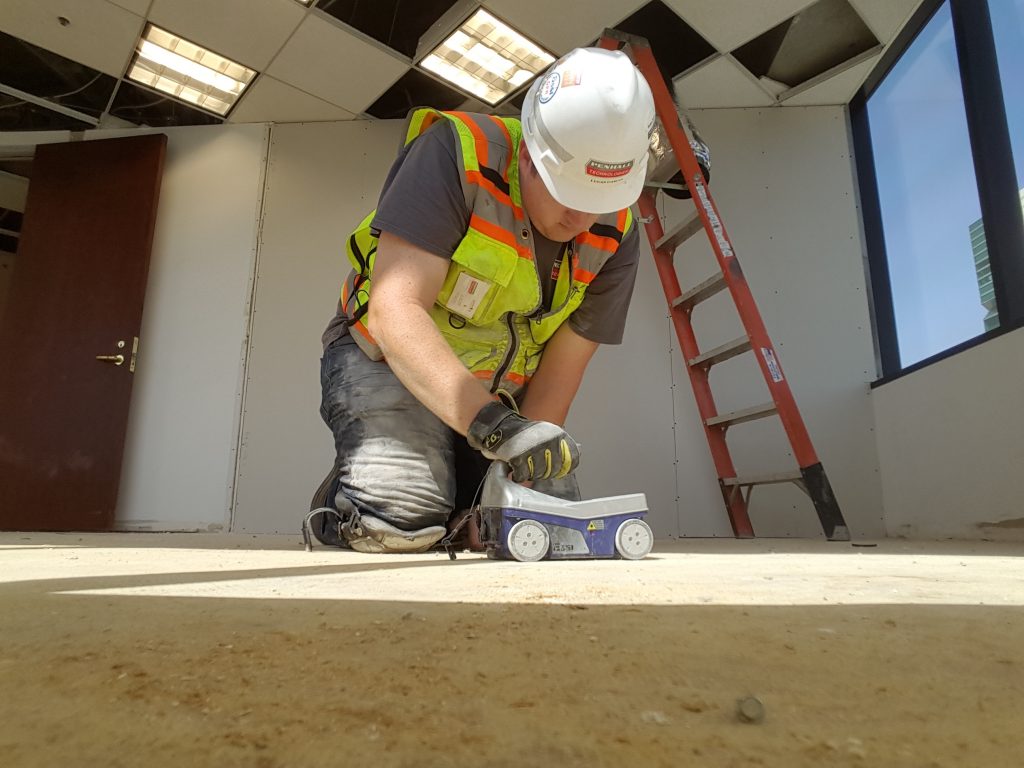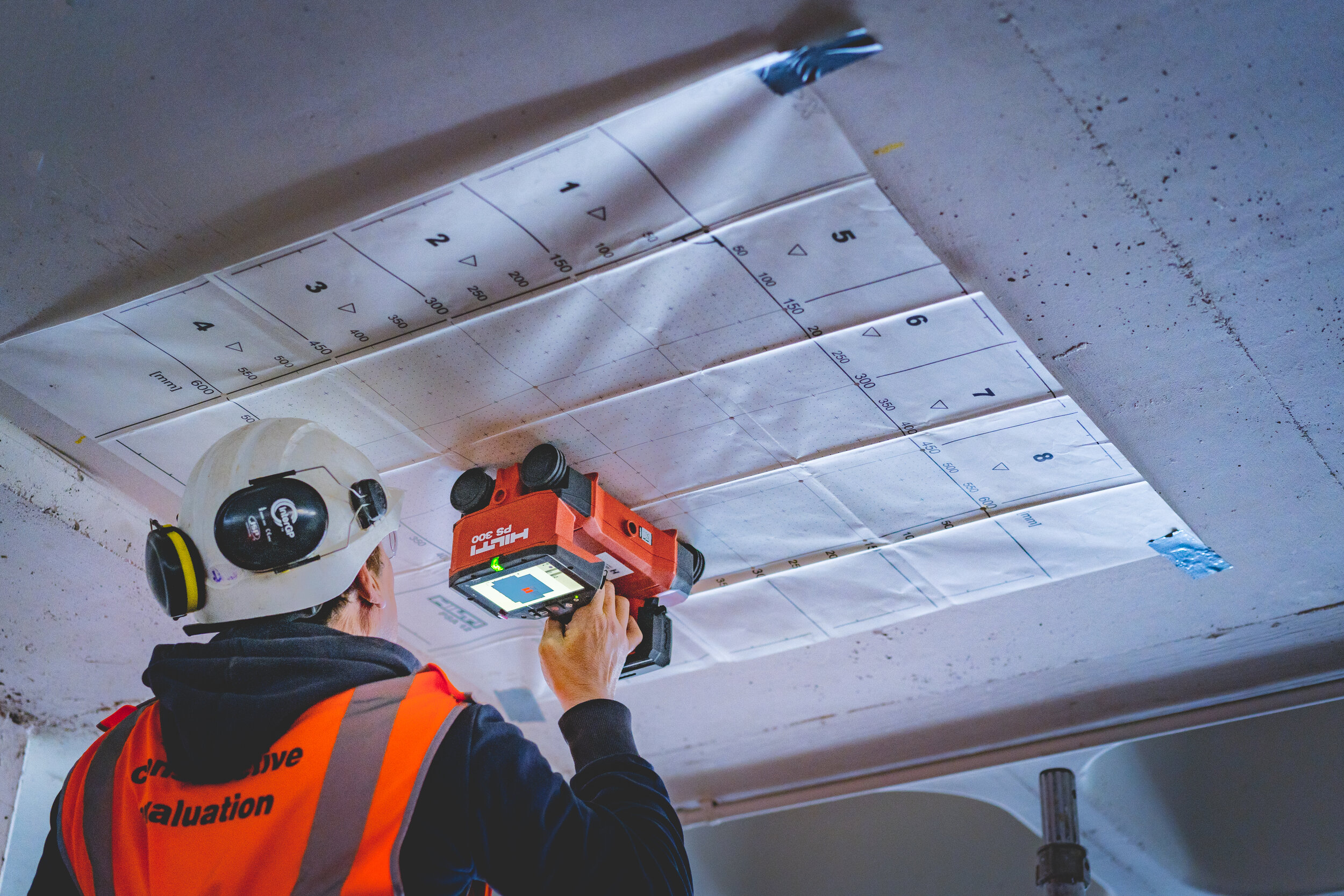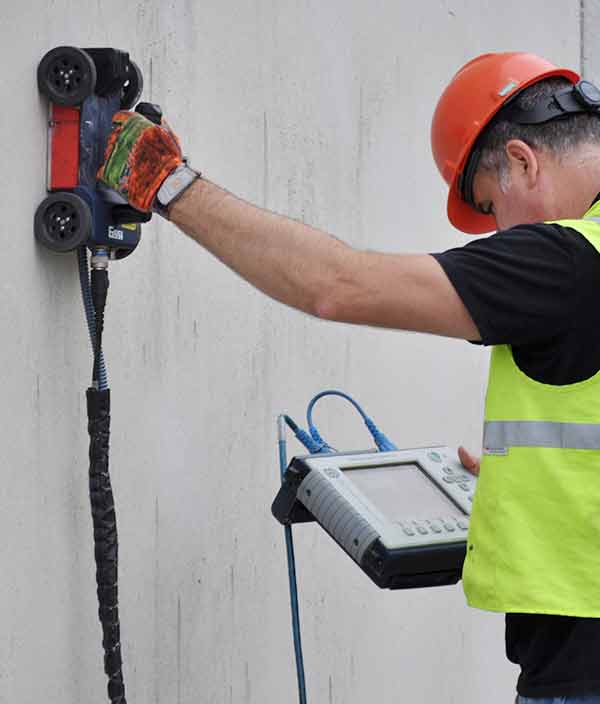Taking Full Advantage Of Efficiency and Decreasing Risks: The Function of Concrete Scanning in Building And Construction
In the realm of building, where precision and safety and security are paramount, the use of concrete scanning technology has actually become an important device for task managers and engineers alike. By taking advantage of sophisticated scanning approaches, construction teams can navigate complicated settings with enhanced effectiveness while alleviating prospective risks that can endanger both budget plans and timelines.

Value of Concrete Scanning
Concrete scanning plays an important role in making certain the structural integrity and safety of construction jobs by accurately detecting embedded things and prospective threats within concrete frameworks. By making use of various scanning modern technologies such as ground-penetrating radar (GPR) and electro-magnetic induction, construction groups can identify rebar, post-tension cable televisions, conduits, and other surprise obstacles before boring, reducing, or coring into concrete. This aggressive method helps prevent pricey damages, injuries, and job hold-ups that may emerge from accidentally striking these objects throughout building and construction activities.
Furthermore, concrete scanning aids in compliance with security regulations and top quality criteria by providing accurate information concerning the problem of concrete structures. It permits job supervisors and engineers to make educated decisions concerning architectural adjustments, repairs, or supports based on reputable information obtained via scanning procedures. Additionally, the specific mapping of embedded objects makes sure the reliable implementation of building plans, lessening the threat of errors and making sure the long life and toughness of the built setting. Ultimately, purchasing concrete scanning services adds to the total success and safety of building jobs.

Advanced Technology in Building And Construction
Given the increasing demand for precision and effectiveness in building and construction practices, the integration of advanced innovation has ended up being important in boosting project results and making sure optimal safety and security procedures - RainierGPR Concrete Scanning. One considerable advancement is Building Information Modeling (BIM), a digital representation of a building's practical and physical features. BIM enables much better cooperation amongst stakeholders, improved visualization of the task, and enhanced decision-making throughout the building process. Additionally, making use of drones in building has actually transformed site studies, progression tracking, and assessments. Drones supply real-time information, enhance security by decreasing the requirement for employees to accessibility risky areas, and improve general task tracking. In addition, the execution of Increased Truth (AR) and Online Reality (VIRTUAL REALITY) technologies in construction layout and drawing board makes it possible for stakeholders to envision the last item, determine possible problems, and make needed changes before building starts. These technologies enhance processes, lower errors, and ultimately add to extra effective and much safer construction practices.

Benefits of Item Mapping
The application of things mapping technology in building and construction jobs uses a wide variety of benefits that improve project preparation and execution. Among the vital advantages of object mapping is its ability to offer comprehensive and accurate info regarding the area of underground utilities, structural elements, and other objects within the building and construction site. This info is critical for making sure that excavation and boring activities are accomplished securely and efficiently, decreasing the threat of damage to existing framework.
Moreover, things mapping technology makes it possible webpage for building and construction teams to create exact 3D models of the site, permitting better visualization of the project and improved coordination amongst various trades - RainierGPR Concrete Scanning. This improved spatial recognition assists to recognize possible clashes and disputes early in the drawing board, lowering the demand for pricey rework and delays throughout construction
Additionally, item mapping can likewise streamline the documents process by supplying electronic documents of the site in the past, throughout, and after construction. These records act as beneficial referrals for future upkeep and remodelling tasks, ultimately boosting the lasting efficiency and sustainability of the built environment.
Stopping Expensive Errors
Object mapping modern technology's duty in building extends beyond improving project preparation and execution to include a critical aspect: stopping costly mistakes. By employing innovative concrete scanning methods, building groups can recognize possible dangers such as rebar congestion, post-tension cords, or gaps within concrete frameworks. Detecting these problems beforehand helps in avoiding pricey mistakes during the building procedure. As an example, hitting a post-tension cable during drilling can bring about structural damage, hold-ups, and raised expenses for fixings. In addition, properly mapping out existing utilities underground can protect against accidental damages during excavation, saving both time and money. In addition, by using item mapping modern technology, construction groups can make certain that structure parts are mounted in the appropriate locations, decreasing the chance see here now of rework or retrofitting due to lost aspects. Generally, the aggressive usage of concrete scanning innovations in building and construction projects dramatically reduces the risk of mistakes and eventually adds to set you back savings and task effectiveness.
Ensuring Security and Top Quality
To support the highest standards of security and top quality in construction projects, the execution of concrete scanning innovation plays an essential role. By using advanced scanning strategies such as ground-penetrating radar (GPR) and electromagnetic induction, construction teams can discover potential hazards hidden within concrete frameworks prior to starting any kind of work. This positive technique not just decreases the risk of mishaps on the construction site but likewise makes certain the structural integrity of the building.
Concrete scanning also assists in confirming the placement of rebar, avenues, and post-tension cords, assuring that these components are properly positioned as per the design requirements. This accuracy in finding critical parts aids prevent errors throughout the building procedure, inevitably resulting in a better ended up product. Additionally, by recognizing any kind of anomalies or disparities within the concrete very early on, essential adjustments can be made without delay, decreasing the probability of rework and pricey delays.
In significance, concrete scanning modern technology acts as a beneficial device in securing both the security of building and construction employees and the total quality of the constructed atmosphere. Its ability to detect prospective threats and make sure adherence to design requirements makes it a vital property in modern building and construction techniques.

Verdict
Finally, concrete scanning plays an important role in making best use of performance and lessening dangers in building tasks. By using innovative modern technology for things mapping, prospective costly mistakes can be stopped, making certain safety and quality of the last structure. It is essential for building companies to focus on using concrete scanning to improve productivity, mitigate dangers, and provide premium lead to their jobs.
Concrete scanning plays a critical function in guaranteeing the architectural honesty and security of construction jobs by accurately detecting embedded things and prospective dangers within concrete structures. The execution of Enhanced Fact (AR) and Digital Fact (VR) technologies in building and construction design and why not find out more planning stages makes it possible for stakeholders to picture the final product, determine potential concerns, and make necessary adjustments before construction begins. By employing advanced concrete scanning strategies, building and construction teams can determine possible risks such as rebar congestion, post-tension cables, or spaces within concrete frameworks. Generally, the proactive use of concrete scanning innovations in building projects significantly lessens the threat of errors and inevitably contributes to cost savings and task effectiveness.
To support the highest standards of safety and top quality in building and construction jobs, the implementation of concrete scanning innovation plays an essential role.